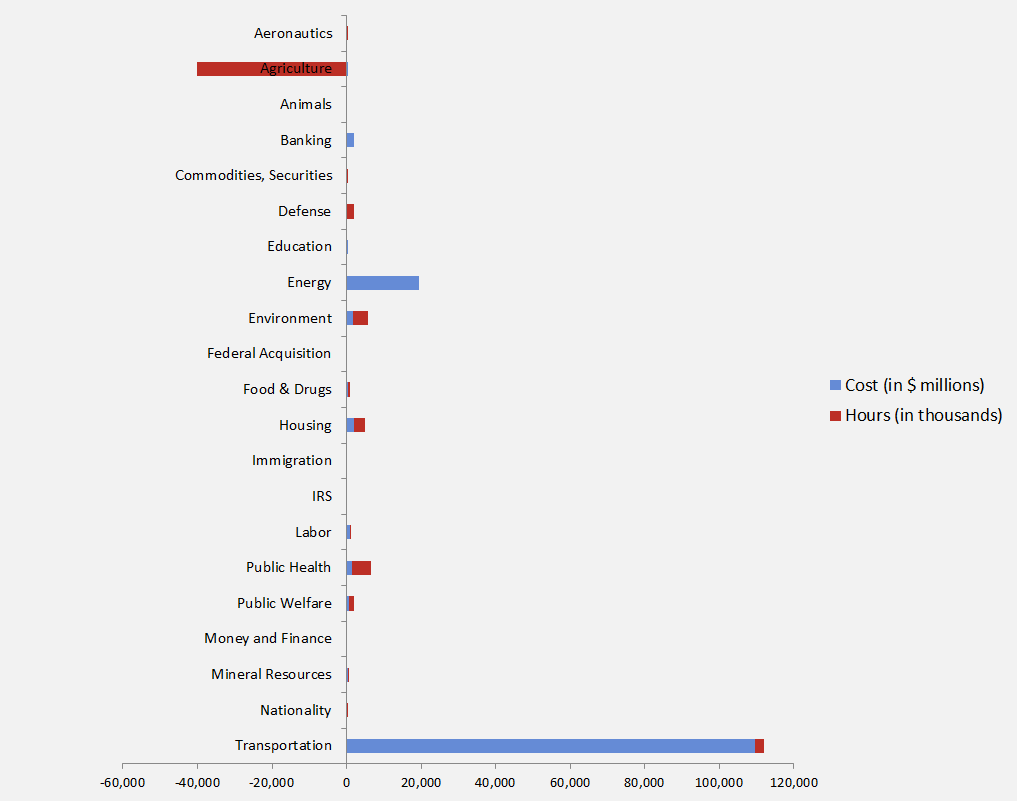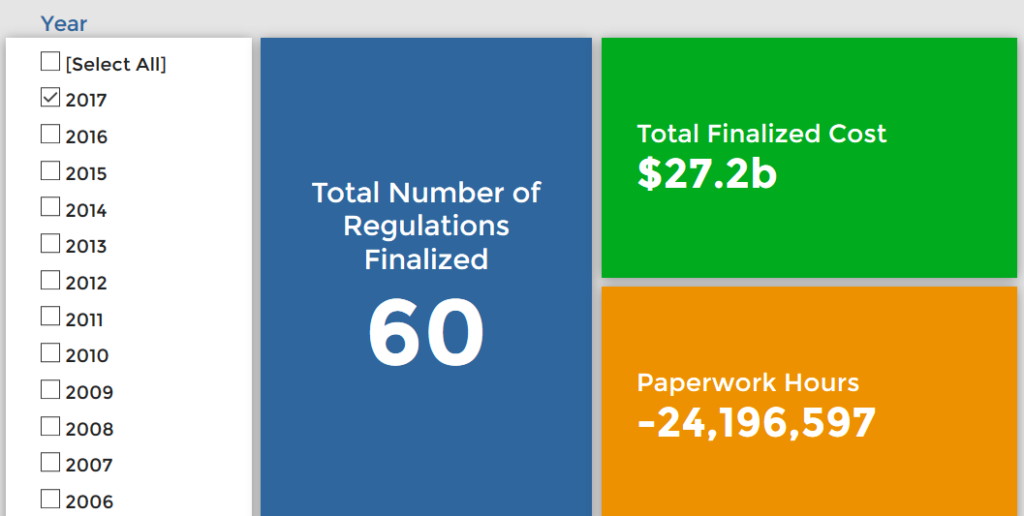Week in Regulation
March 6, 2017
A Week of Reform Proposals
Although the world of published regulations was somewhat barren this week, with just a handful of routine airworthiness directives and a lone Federal Communications Commission (FCC) final rule, Congress and the administration were busy on the reform front. Regulators published $41 million in costs this week, but none were significant measures, so this total won’t count toward the administration’s one-in, two-out regulatory budget. Paperwork accelerated by just 1,200 hours. The per capita regulatory burden for 2017 is $428.
Regulatory Toplines
- New Proposed Rules: 33
- New Final Rules: 59
- 2017 Total Pages of Regulation: 12,502
- 2017 Final Rules: $27.2 Billion
- 2017 Proposed Rules: $111.5 Billion
The American Action Forum (AAF) has catalogued regulations according to their codification in the Code of Federal Regulations (CFR). The CFR is organized into 50 titles, with each title corresponding to an industry or part of government. This snapshot will help to determine which sectors of the economy receive the highest number of regulatory actions.
FCC published a final rule amending rates for interstate inmate calling. The regulation is merely an announcement of an approval for a paperwork requirement. It imposes 1,200 new hours on businesses, but as is typical for FCC, it did not monetize the burden.
Tracking Regulatory Modernization
This week the administration and Congress were busy on the reform front. First, President Trump signed an executive order (13,778) formally reviewing the controversial “Waters of the United States” rule. It is expected that after a review, EPA will submit a revised proposal sometime in 2017, a move that will likely initiate a later legal fight with environmental groups.
As AAF detailed here, Congress passed three notable regulatory reform bills. Broadly, the first codifies the current regulatory process and an executive order from the Clinton Administration. The second, known as the SCRUB Act, establishes an independent commission to review past rules and make recommendations for reform, with the goal of reducing regulatory costs by 15 percent. The third bill aims to improve regulatory transparency and reduce agency lobbying on behalf of new regulation.
The House and Senate have both voted to overturn the Securities and Exchange Commission’s “Resource Extraction” rule, the Department of Interior’s “Stream Protection” measure, and a rule governing firearms purchases for social security disability recipients. Now that these measures have been signed, this will eliminate $2.4 billion in costs and 435,000 paperwork burden hours.
The House has voted to overturn the Department of Labor’s “Blacklisting” rule, a methane measure for federal lands, “Teacher Preparation Issues,” part of the “Every Students Succeeds Act,” and eight other minor regulations. Currently, Congress and the administration have proposed to eliminate more than $9.1 billion in burdens ($2.5 billion annually) from last-minute Obama-era regulations, along with 7.6 million paperwork burden hours. To date, there have been 30 resolutions of disapproval introduced.
Affordable Care Act
Since passage, based on total lifetime costs of the regulations, the Affordable Care Act has imposed costs of $53 billion in final state and private-sector burdens and 176.9 million annual paperwork hours.
Dodd-Frank
Click here to view the total estimated revised costs from Dodd-Frank; since passage, the legislation has produced more than 74.8 million final paperwork burden hours and imposed $38.5 billion in direct compliance costs.
Total Burdens
Since January 1, the federal government has published $138.7 billion in compliance costs ($27.2 billion in final rules) and has cut 20.8 million paperwork burden hours (due to 24.1 million in reductions from final rules). Click below for the latest Reg Rodeo findings.












